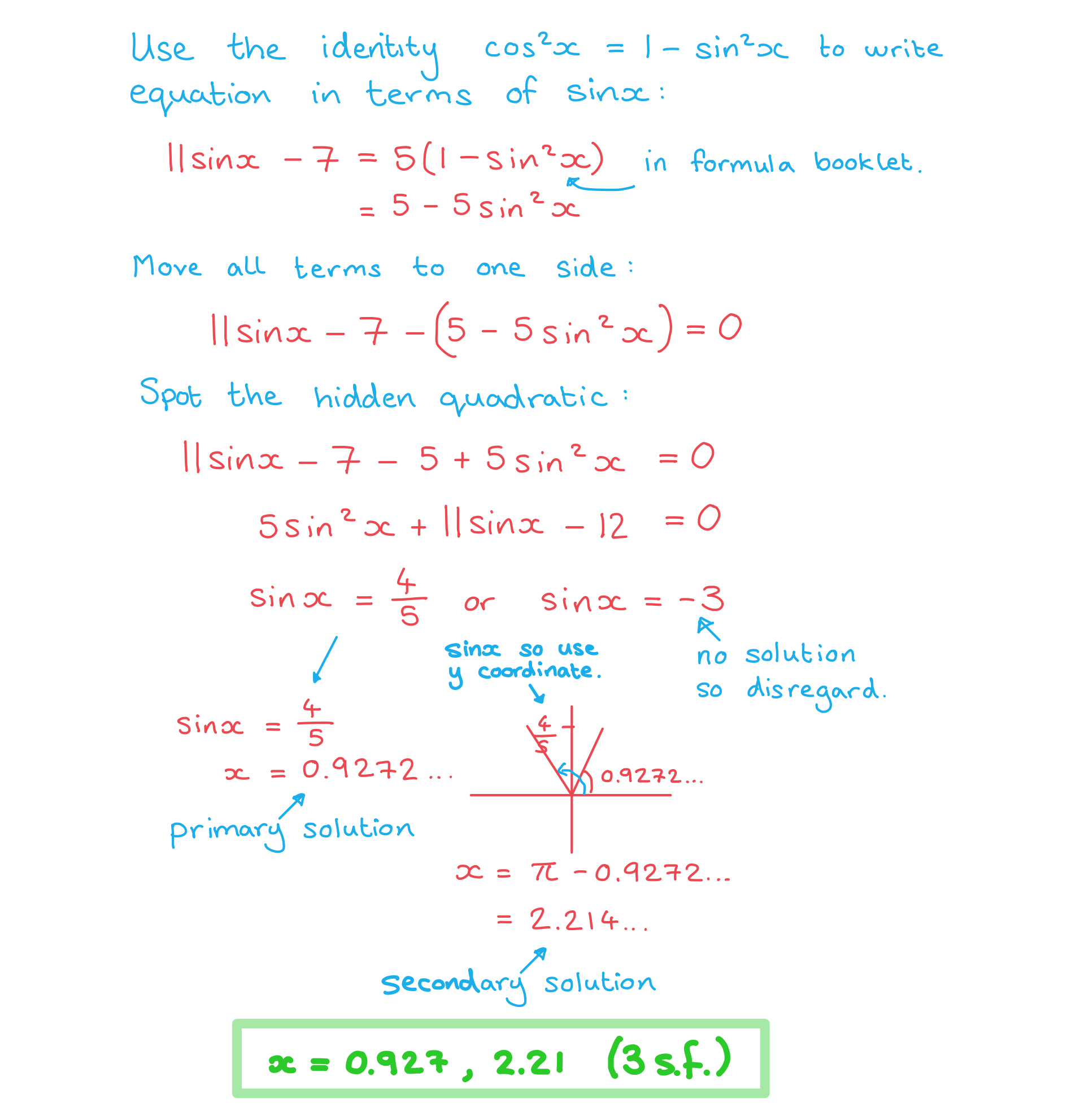Did this video help you?
Quadratic Trigonometric Equations (DP IB Maths: AA HL): Revision Note
Quadratic Trigonometric Equations
How are quadratic trigonometric equations solved?
- A quadratic trigonometric equation is one that includes either
,
or
- Often the identity
can be used to rearrange the equation into a form that is possible to solve
- If the equation involves both sine and cosine then the Pythagorean identity should be used to write the equation in terms of just one of these functions
- Solve the quadratic equation using your GDC, the quadratic equation or factorisation
- This can be made easier by changing the function to a single letter
- Such as changing
to
- Such as changing
- This can be made easier by changing the function to a single letter
- A quadratic can give up to two solutions
- You must consider both solutions to see whether a real value exists
- Remember that solutions for sin θ = k and cos θ = k only exist for -1 ≤ k ≤ 1
- Solutions for tan θ = k exist for all values of k
- Find all solutions within the given interval
- There will often be more than two solutions for one quadratic equation
- The best way to check the number of solutions is to sketch the graph of the function
Examiner Tip
- Sketch the trig graphs on your exam paper to refer back to as many times as you need to!
- Be careful to make sure you have found all of the solutions in the given interval, being super-careful if you get a negative solution but have a positive interval
Worked example
Solve the equation , finding all solutions in the range
.


You've read 0 of your 5 free revision notes this week
Sign up now. It’s free!
Did this page help you?
